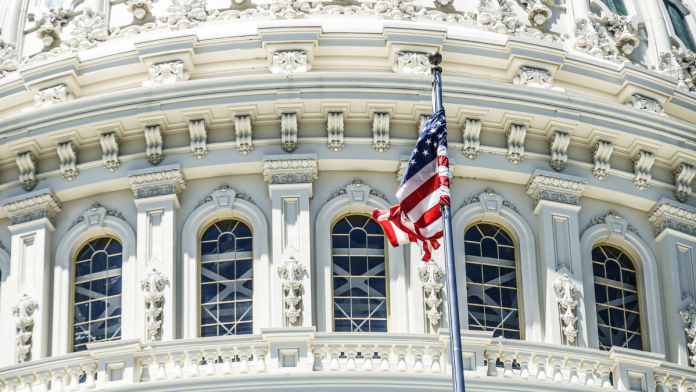The USA’s Senate has passed a package worth £369bn of green energy measures to reduce inflation and tackle climate change. The implications for American energy infrastructure are big.
President Biden and vice president Kamala Harris have welcomed the new Senate budget agreement – entitled the Inflation Reduction Act – which has the potentially to reduce America’s carbon impact by 40% by 2030. The package of measures includes direct support for families to improve their energy conditions and major implications for infrastructure across the country.
Biden said of the agreement: “This investment in environmental justice is real. It also provides tax credits that will create thousands of good-paying jobs — manufacturing jobs on clean energy construction projects, solar projects, wind projects, clean hydrogen projects, carbon capture projects, and more — by giving tax credits for those who build these projects here in America.”
Harris set out why this matters, saying: “Climate change has become a climate crisis. And a threat has now become a reality. In recent days, deadly floods have swept through Missouri and Kentucky, washing away entire neighbourhoods, leaving at least 35 dead including babies, children. As has been reported, four children from one family. So, the devastation is real. The harm is real. The impact is real. And we are witnessing it in real-time.”
Support for American households
Against the backdrop of high inflation, and particularly high energy price rises, the new Act provides significant sums of money for US households to help reduce their energy costs and carbon impact by investing in new domestic infrastructure.
$9bn is being provides for home energy rebate programmes, focused on low income consumers, to help electrify home appliances and for energy efficient retrofits.
10 years of consumer tax credits have been set out to help make homes energy efficient and support adoption of clean energy, making heat pumps, rooftop solar, electric HVAC and water heaters more affordable.
$4,000 consumer tax credits are being released for lower/middle income individuals to buy used clean vehicles and $7,500 tax credit to buy new clean vehicles, with big implications for electric charging facilities.
Energy Security
A major cause of the present energy price inflation has been the rise of international oil and gas prices against the backdrop of global instability caused by wars and the pandemic. The new act sets out major plans for reducing American exposure by investing in the domestic renewables sector.
$30bn of production tax credits will accelerate US manufacturing of solar panels, wind turbines, batteries, and critical minerals processing. $10bn of investment tax credits will help build clean technology manufacturing facilities, like facilities that make electric vehicles, wind turbines and solar panels – which are presently highly dependent on Chinese supply chains.
This will dramatically improve the capacity of the USA to build new clean energy infrastructure, something set to benefit from the president’s recent announcement of a 700,000 acre zone for offshore wind off the south coast.
$500m is also being directed towards heat pumps and critical minerals processing and $2bn will be provided to retool existing auto manufacturing facilities to manufacture clean vehicles and up to $20bn in loans will build new clean vehicle manufacturing facilities across the country.
A further $2bn will be invested in National Labs to accelerate breakthrough energy research.
Decarbonisation
While much of the Act is focused on the direct impact of energy inflation on the public and the economy, some of the largest sums are planned for decarbonisation efforts across the country.
$30bn is being provided through grants and loans for states and electric utilities to invest in clean electricity while tax credits and grants will also support investment in clean fuels and clean commercial vehicles to reduce transport emission.
Grants and tax credits will be provided to industrial manufacturing companies to help them reduce their carbon footprint. This includes more than $5bn for a new advanced industrial facilities programme to cut emissions from high-carbon sectors like cement, chemicals and steel.
$9bn is being made available for the federal government to buy domestically-manufactured clean technologies with the aim of establishing a stable market for clean products. The US Postal Service will also be given $3bn for zero-emission vehicles.
$27bn will be invested to speed up the adoption of clean technologies in disadvantaged communities, with a total of almost $60bn available to buy electric school busses, upgrade ports and support community-led projects.
The scale of change this represents in upscaling and normalising decarbonised infrastructure, with the resulting need for greater electricity transmission and charging capabilities will require significant further investment.


















